Hadassah
Feature
Convention for the Century
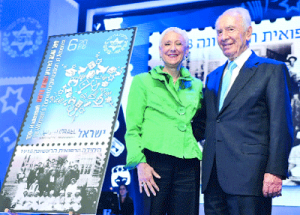
As 2,000 women and men in bright red Hadassah T-shirts joyously wound their way down Jerusalem’s Jaffa Road last fall, music playing, flags flying and balloons soaring, a bemused woman from the Philippines timidly asked who they were.
It was a question no one else needed to pose. There is scarcely an Israeli whose life is untouched by Hadassah, and its Centennial was their celebration, too, from the country’s president and prime minister, to the Jaffa Road storekeeper who impulsively blew his shofar, to the many who simply called out: “We love you, Hadassah!”
As the marchers walked toward Safra Square, in front of Jerusalem’s City Hall, they were only a block from the site of Hadassah’s first project—the clinic opened in 1913 by two American nurses sent to fight disease and neglect. It was a vivid symbol of the changes of 100 years: Hours after the march, Hadassah dedicated one of the most advanced medical buildings in the world, its 19-story, state-of-the-art Sarah Wetsman Davidson Hospital Tower.
“We are in Israel to celebrate a century of building and a century of Hadassah’s partnership with the Zionist movement and State of Israel,” declared Hadassah National President Marcie Natan, standing in the square for the opening event of the Hadassah Centennial Convention in Jerusalem, held October 15 to 18. “Today’s march is only a small portion of a journey that began 100 years ago. [We] are ready to continue our work.”
Implicit as Hadassah marched that day were changes on an equal scale. They were in “a united Jerusalem, the capital of a sovereign Jewish state,” proclaimed Jerusalem Mayor Nir Barkat, as he welcomed them, clad in a Hadassah T-shirt. Hours later, at the dedication held in Jerusalem’s International Conference Center, Israel’s President Shimon Peres said, “In a world of newly empowered women, Hadassah is the greatest of women’s institutions. You have shown that when women get together they can change the world.”
Technology, too, has changed beyond imagining: In 1934, Palestine Broadcasting System engineers set up a radio relay between Jerusalem and the convention in Washington so Henrietta Szold could announce to delegates the groundbreaking for Hadassah’s hospital on Mount Scopus. Today, delegates had all made the trip to Jerusalem and thousands more watched the convention in real-time, online, at the click of a computer or smartphone.
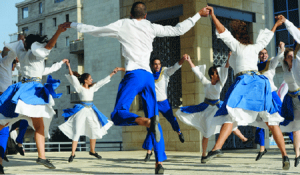
Hundredth birthday greetings flowed in: a letter from President Obama, congratulatory resolutions from the United States Senate and House of Representatives and a commemorative Hadassah stamp from Israel’s Postal Authority. There were also interviews and features in Israel’s media and good wishes from every speaker—wishes echoed by Israelis who encountered delegates as dozens of buses ferried them from 11 hotels to sessions and events in and outside Jerusalem in a well-orchestrated logistical feat.
The Centennial flag flew. A Centennial torch, lit at the Mount of Olives grave of Henrietta Szold two and a half years ago and back in Israel after touring America, was brought to the opening ceremony by Hadassah Neurim graduate and Olympic hopeful Ilya Fodpolani. A life-size cardboard cutout of Traveling Henrietta, a printable image of Hadassah’s founder, graced the platform at the convention’s opening. Members have printed out and photographed themselves with Traveling Henrietta on their international travels and at events across the United States, from torch runs to Fenway Park’s 100th anniversary to biking the Rockies. Traveling Henrietta even appeared on ABC, CBS and NBC national morning programs and at Broadway shows.
Hadassah’s Centennial Convention was both a celebration of the organization’s first century and a dedication to its second. “Hadassah has fulfilled so many of the dreams of Henrietta Szold,” said 21st national president Marlene Post, who coordinated Centennial activities with Frieda Rosenberg. “Now we dare to dream on our own.”
First among the convention’s highlights was the inauguration of Hadassah’s Centennial gift to Israel, the $363-million tower on the Hadassah Medical Center’s Ein Kerem campus. For three days, in busloads of 50 at a time, every delegate visited, entering through the tower’s three-story atrium and seeing its medical departments, family rooms, synagogue and healing gardens.
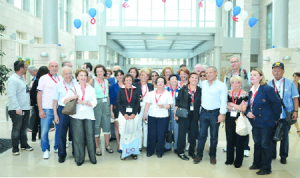
“Henrietta Szold planted a seed for creative and innovative medical and social services that grew into a mighty tree,” said Hadassah Medical Organization Director-General Ehud S. Kokia at the dedication ceremony. “Hadassah, long a synonym for excellence in medicine, now has an excellent facility as well.”
“You hear about it and you read about it, but you don’t get it until you see it,” said delegate Beverly Slott of the Oceanside, New York, chapter. For Sandra Aronson of the Southern New England chapter, “it’s an amazing building. And it was amazing how appreciative of us everyone there is. We spoke to a patient, some nurses and a physician, and they all related to us as partners and friends.”
The tower was formally dedicated at the International Convention Center, with Peres and United States Ambassador to Israel Daniel Shapiro serving as guests of honor. Peres thanked Hadassah “for your special contribution to the spirit and future of Israel. Generosity is more powerful than power.”
Shapiro (born, he said, “of a Hadassah mom, married to a life member and father to three life members” as well as being a Hadassah Associate) described the relationship between the United States and Hadassah as “iconic, meaningful and treasured…. Hadassah-Ein Kerem is a regular stop on the itineraries of senior U.S. government staff in Israel, [who] go to see the quality of care and the equality of treatment…. USAID has contributed $54 million to HMO since 1976, most recently a grant of $1.3 million for equipment for the new tower, [knowing that] every dollar is well spent.”
William M. Davidson of Bloomfield Hills, Michigan, who made the tower’s naming gift in memory of his mother, did not live to see its completion. His widow, Karen Davidson, and his sister Dorothy Gerson attended the dedication. “Bill saw the tower as a place of peace and hope for the State of Israel,” said Davidson. “He made the gift to honor his mother and acknowledge 5,000 years of Jews in Israel.”
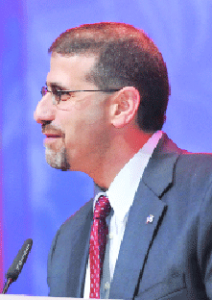
While the Davidsons, along with Judy and Sidney Swartz of Delray Beach, Florida, and Brookline, Massachusetts, provided the tower’s major funding, every member and chapter made a contribution. “The Jewish tradition of communal building dates back to building the biblical Tabernacle in the wilderness, when each gave according to their means,” said Judy Swartz, who with her husband, Sidney, led the fundraising effort in the face of a fierce recession. “Thank you for your donations. Our task isn’t yet finished. Tonight marks another beginning.”
A convention in Jerusalem is an opportunity to see Hadassah’s Israel projects up close. Hadassah Neurim, one of three Youth Aliyah villages that Hadassah supports (Ramat Hadassah Szold and Meir Shfeya are the others), hosted delegates in a salute to Hadassah’s nonmedical projects—Jewish National Fund, Young Judaea and the Hadassah Academic College as well as Youth Aliyah itself.
Neurim’s 220 students are among more than 300,000 youngsters who have benefited from Hadassah’s Youth Aliyah residential programs since 1934. They welcomed delegates on a muggy, overcast day with a mandolin orchestra and told them about the village’s special projects: training athletes (its sports facilities are used by Israel’s Olympic teams); jewelry-making; pet adoption; and a program for teens from the former Soviet Union who are in Israel without their parents.
Many of the 210 Young Judaeans currently in Israel were at Neurim to tell delegates about their Year Course program, which is designed not only as an Israel experience but also as an example for social action and giving back.
The Hadassah Academic College, which evolved from vocational schools established by Hadassah, also had representatives at Neurim. The college pioneered programs in specialized higher education in Israel, in which 200,000 people are enrolled today. It awards degrees for laboratory science, environmental health sciences, optometry and communications disorders as well as other disciplines.
JNF World Chair Effie Stenzler welcomed delegates in a giant field tent at Neurim. “With JNF,” he noted, “Hadassah has paved the road that led to the state and then changed the face of Israel. Together, we planted 240-million trees, built over 250 water reservoirs and created parkland and urban parks accessible to the disabled.”
The convention was about more than celebrating, dedicating and visiting projects. As at any Hadassah conference, delegates were there to learn, understand and grow. Study sessions were led by Knesset members from across the political spectrum, scholars, diplomats, journalists, rabbis and industrialists, examining politics, faith, society, Israel’s image and the Jewish people in the next century.
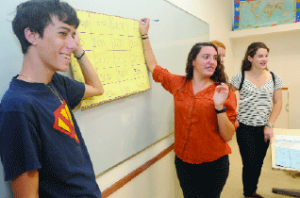
Former Member of Knesset and opposition leader Tzipi Livni of the Kadima Party shared her formula for a secure, democratic Jewish homeland: ending the conflict with two states, or “divorcing rather than marrying the Palestinians.” National Union Party Knesset member (and former Hadassah physician) Aryeh Eldad dismissed this view, characterizing the conflict as religious and impervious to a territorial solution. Khaled Abu-Toameh, a Muslim Arab who writes for the Jerusalem Post, advocated physical separation because “on the Palestinian side, there are those who can’t deliver [peace] and those who won’t, [even though] Israeli Arabs have seen Israeli values and like them.”
Delegates heard from eyewitnesses to history: former Israeli ambassador Yitzhak Levanon described the September 2011 mob attack on the Israeli Embassy in Cairo—the siege ended only by a phone call from President Obama. Former ambassador Yehuda Avner shared memories of the declaration of the state and his ambassadorship to Britain. Israel’s choice, he said, has always been “heroism or oblivion.”
Rabbi Donniel Hartman, president of the Shalom Hartman Institute, spoke of his evolving love for Israel. “Love must be dynamic,” he said. “As the object of love changes, so does the nature of love, and today the primary engine of my love is the Israel this country can be, and the role I can play.”
Technology venture capitalist Jon Medved, named by The New York Times as one of the 10 most influential Americans in Israel, told delegates that Israel’s economy “is on fire” and has “outpaced Western economies by two to one for the past 20 years,” he observed. “For the past decade, its stock market has been the safest in the Western world.… Israeli unemployment is near an all-time low…. Three hundred multinationals have facilities in Israel—among them IBM, Google, AOL, Yahoo, Facebook, Philips, 3M, Intel and Dell. Technology basic to computers, cell phones, DVDs, instant messaging, antivirus programs, Kindle, Skype…were all created here.”
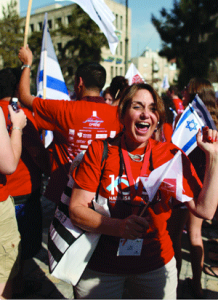
Israel’s technological prowess was also highlighted by Hadasit Bio-Holdings CEO Ophir Shahaf. At the Hadassah Associates meeting, he urged his audience to redouble their investment in Israel, starting with Hadasit. “Hadassah is a major source of innovation in medications, procedures and devices,” he said, “and a strong driving force behind HMO.”
Despite jet lag, early mornings, late nights and extras such as Jerusalem tours, pre-breakfast and late-night prayer at the Western Wall and (for some) dancing all night at one of Israel’s hottest clubs, there was still plenty of energy for the Gala Centennial Celebration that marked the convention’s close.
The gala commemorated Hadassah’s founders, “few of whom saw the nation of Jewish dreams they worked so hard to make a reality,” Marcie Natan told delegates assembled in the convention center.
That final evening celebrated “this extraordinary organization that I’m blessed to be associated with,” said convention chair Miki Schulman. “One of the greatest honors of my life has been to chair this convention and launch Hadassah’s second century.”
At the gala, members reunited with three of the millions of lives they had touched—Ethiopian-born Eli Mantson, whom Hadassah helped grow from street kid to lawyer; terror victim Adi Hoodja, whose life and legs were saved by Hadassah doctors; and Yosef Abramowitz, whom Hadassah brought to Israel on a Young Judaea scholarship and who became one of the country’s leading solar developer. All three joined delegates that evening.
The gala also celebrated Bernice S. Tannenbaum, born only 13 months after Hadassah itself, 16th Hadassah national president, chair of the organization’s 50th Anniversary Convention, founder of Hadassah International and creator of the Hadassah Foundation. “I joined Hadassah in the 1940s and spent the rest of my life there,” she said.
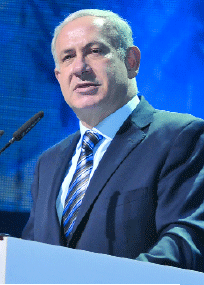
The evening’s most prominent celebrant was Prime Minister Netanyahu, this year’s recipient of the Henrietta Szold Award, established in 1949 to honor those representing the ideals of Hadassah’s founder. “Today, we honor an extraordinary leader of the Jewish people and the State of Israel and a powerful voice of reason to all mankind,” said Nancy Falchuk, Hadassah’s 24th national president, after presenting the award. “Rarely in history has one person’s life so embodied the values, the intelligence and the essence of the Jewish people.”
The prime minister declared himself “deeply honored” to receive the award. “I came here tonight,” he said, “remembering something my father told me: If you want to understand the power of women, look at Hadassah. You have made such a difference. Thank you for 100 years of partnership in building the Jewish state. Thank you for making the Hadassah Medical Center one of the world’s leading medical organizations. Israel’s health care system is ranked sixth in the world—and you have much to do with that. You have been Israel’s partner for a century, and I’ve no doubt that you will continue to be so in the century ahead.”
“It took Hadassah 100 years to reach this night—100 years of hard work, struggle and triumph,” said Natan, as the evening and convention passed into history. “These past days have been a well-deserved celebration for us and for the generations who brought Hadassah to this point. We’ll look back on them as a special moment, but a moment nonetheless, as we embark on our second century.”x










 Facebook
Facebook Instagram
Instagram Twitter
Twitter
Leave a Reply